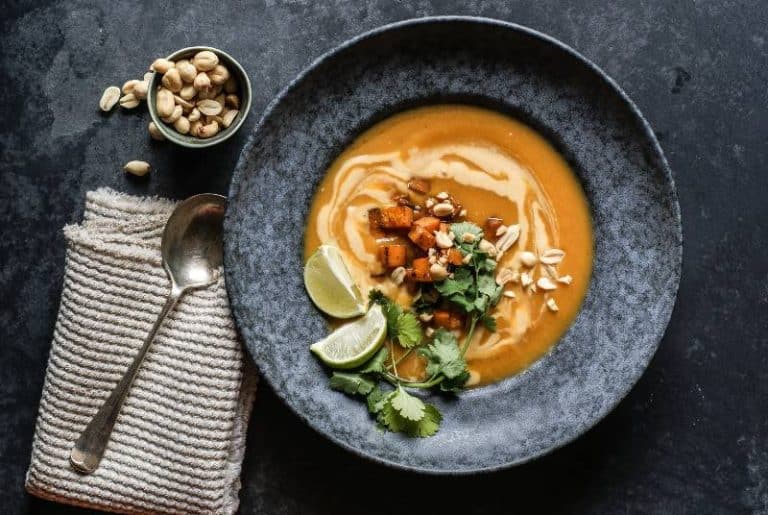Discovering Thai Sweets: More Than Just a Treat!
Are you seeking a unique and flavorful way to satisfy your sweet tooth cravings? From delicately crafted sweet sticky rice desserts, to fragrant pandan-infused jellies, there’s no doubt that traditional Thai desserts are both exotic and delicious. With the help of this guide, you can explore all of the different popular treats that Thailand has to offer. Discover how each dessert is made while learning about their history as well as their individual ingredients. Enjoy some new recipes featuring these treats or take a tour around Thailand for an authentically immersive culinary journey – either way prepare yourself for a sweet experience!
Thai desserts, rooted in rich cultural traditions, use unique ingredients like sticky rice, coconut milk, and tropical fruits. From the famous mango sticky rice to the delectable kanom krok, these sweets offer a delightful fusion of flavors and textures, representing Thailand’s culinary diversity and heritage.
Key Takeaways
- Thai desserts are not just about flavors; they carry with them a rich cultural and historical significance, reflecting the diversity and traditions of Thailand.
- The use of native ingredients like sticky rice, coconut, and tropical fruits, makes Thai desserts distinct, offering a unique blend of taste and texture.
- With some basic ingredients and knowledge, many Thai desserts can be recreated at home, allowing you to relish the authentic flavors of Thailand wherever you are.

Basic Ingredients in Thai Desserts
Thailand is world-famous for its mouthwatering cuisine and for good reason. But the savoriness of Thai food is not confined to its main dishes; Thai desserts are equally unique, flavorful, and deserving of attention. Here’s a guide to some of the popular sweets and desserts in Thailand.
Before diving into the world of Thai sweets and desserts, let’s first acquaint ourselves with the basic ingredients commonly used in Thai dessert-making.
Basic Ingredients in Thai Desserts
- Sticky Rice: Also known as glutinous rice, sticky rice is the heart of many Thai sweets. Unlike regular rice, it’s very sticky when cooked and has a unique chewy texture.
- Coconut Milk: An important staple in Thai cooking, coconut milk is used in a wide range of Thai desserts because it adds a rich, creamy taste, as well as a tempting aroma.
- Palm Sugar: Unlike processed white sugar, palm sugar is natural, unrefined, and has a caramel-like sweetness. It is often used to subtly sweeten Thai desserts.
- Tapioca: Tapioca pearls are derived from the roots of cassava plants. These chewy little pearls add an interesting texture to any dessert they are added to.
- Tropical Fruits: Thailand is home to an abundance of tropical fruits like mango, durian, and jackfruit. Fruits are often incorporated in Thai desserts, either as a main ingredient or a side serving.
Popular Thai Desserts
Following our introduction to the basic ingredients of Thai desserts, now let’s explore some popular Thai sweets you must try!
- Mango with Sticky Rice (Khao Niew Mamuang)
This is perhaps the most popular and loved Thai dessert. It’s the perfect combination of ripe, sweet mango and delicious coconut sticky rice. It’s often topped with a drizzle of coconut cream and some roasted sesame seeds. - Thai Tapioca Pudding (Sakoo)
Sakoo is a wonderfully textured dessert made from small tapioca pearls, coconut milk, and sugar. It’s topped with coating of coconut cream, and is usually served with ripe bananas or taro pieces. Because of its chewy and creamy textures and mild sweetness, Sakoo is a dessert you’ll definitely remember. - Fried Bananas (Kluay Tod)
A popular street food, Kluay Tod are bananas that are coated in a batter made from shredded coconut and sesame seeds, deep fried until they’re golden and crispy, and then generously sprinkled with sugar. It’s a perfect blend of sweet, savory and crispy! - Sweet Coconut Pancakes (Kanom Krok)
These are small, round pancakes made from a mixture of rice flour, sugar, and coconut milk. The result is a crispy-on-the-outside, soft-and-creamy-on-the-inside bite-sized dessert that is hard to resist. - Sticky Rice Dumplings (Kanom Tom)
Kanom Tom are sweet dumplings made of sticky rice flour filled with a center of sweetened coconut shreds, and then coated in more coconut. They come in various colors and are often served during celebrations and festivals. - Coconut ice cream
Coconut ice cream is a staple dessert in Thai street food culture, especially popular among locals and tourists alike. Unlike the more westernized versions, Thai coconut ice cream captures the essence of Thailand’s rich culinary landscape through its flavors and toppings. Here’s a closer look:
Features of Thai Coconut Ice Cream:
- Base: The base primarily consists of creamy coconut milk, giving it a distinct, rich flavor and a dairy-free status. This makes it popular even among lactose-intolerant individuals.
- Serve: It’s traditionally served in a scooped-out half coconut shell, enhancing the coconut experience with bits of fresh coconut flesh you can eat along with the ice cream.
- Toppings: What sets Thai coconut ice cream apart are its diverse toppings. Common additions include:
- Sweet sticky rice (the same kind paired with mango)
- Toasted peanuts
- Sweet corn
- Sweetened palm seeds
- Small tapioca pearls
- Jackfruit or other tropical fruits
Each of these desserts represents the richness of Thai cuisine – a well-balanced blend of flavors, textures, and colors. So next time you’re eating Thai, remember to save some room for dessert!
Lesser-Known Thai Desserts Worth Trying
After discovering some popular Thai desserts, it’s time to explore some lesser-known, yet equally delightful Thai treats worth trying.
- Chor Muang (Flower-shaped Dumplings)
These delicate flower-shaped dumplings are truly a work of art. Made from a rice flour dough, they’re typically filled with a sweet and savory mix of seasoned minced pork and peanuts. The natural purple color comes from butterfly pea flower extract, but sometimes food coloring is used. - Black Bean Pudding (Tao Suan)
Tao Suan is a warm, comforting Thai dessert made of sweetened black beans and sticky rice flour balls in a thick and creamy coconut milk soup. It’s mildly sweet and makes for a perfect cozy dessert, especially during cooler weather. - Coconut Custard-filled Pumpkin (Sankayaa Faktong)
If you’re looking for an impressive Thai dessert, look no further! Sankayaa Faktong is made by hollowing out a small pumpkin, filling it with a mixture of coconut milk, eggs, and sugar, and then steaming it until the custard is set. The result is a melt-in-your-mouth dessert with a stunning presentation. - Thai Layered Jelly Cake (Kanom Chan)
Kanom Chan is a traditional Thai dessert made from a combination of rice flour, tapioca flour, sugar, and coconut milk. The dessert consists of several colorful layers, each with a slightly different flavor. It’s typically served in squares and has a slightly chewy, yet smooth texture. - Steamed Banana Cake (Kanom Gluay)
This steamed cake, made from a mixture of ripe bananas, shredded coconut, rice flour, palm sugar, and coconut milk, is both moist and fluffy. The natural sweetness of the bananas and the richness of the coconut milk come together in perfect harmony. - Sweet Corn Pudding (Kanom Krok Kao Pod)
Similar to the well-known Kanom Krok, this version features sweet corn as the star ingredient. Tender sweet corn kernels are mixed with rice flour, sugar, and coconut milk to make these heavenly little pancakes. Crispy on the outside and soft on the inside, this dessert is perfect for corn lovers. - Water Chestnut and Coconut Milk (Tub Tim Grob)
This refreshing dessert consists of diced water chestnuts coated in a thin layer of tapioca, served in a bowl of coconut milk and crushed ice. The water chestnuts acquire a delightful chewy texture from the tapioca, while the coconut milk adds a creamy richness.
Each one of these lesser-known Thai desserts showcases the diverse and versatile nature of Thai sweets. So, next time you’re exploring Thai cuisine, don’t hesitate to venture beyond the well-trodden paths and try some of these hidden gems.
Serving and Eating Thai Desserts
Having discussed the usual and lesser-known Thai desserts, let’s delve into the traditional ways these dishes are served and typically enjoyed.
Serving and Eating Thai Desserts
Traditional Ways of Serving
- Banana Leaf Wrapping
Many Thai desserts like Kanom Tom and Kanom Gluay are often served in banana leaves, giving the dessert not just a beautiful natural packaging, but also an intriguing taste from the leaf itself. - Small Portions
Most traditional Thai desserts are served in small, bite-size portions allowing them to be shared easily among friends and family. - Serving Ware
A lot of traditional Thai desserts, such as Khanom Chan and Sankayaa Faktong, are served on ornate dishes and trays, reflecting the beautiful presentation that Thai cuisine is well-known for.
Pairings with other Thai Dishes
Thai desserts often build upon the flavors of main meals, acting as a complement to savory dishes. Here are some traditional pairings:
- Sticky Rice Dishes with Mango
A popular way of ending a meal is with ‘Khao Niew Mamuang’, or mango sticky rice, which is a wonderful contrast to a spicy main dish and cools the palate. - Fried Desserts after Soup
Thai soups are often hot and packed with flavor. The savory taste from the soup is usually followed up by fried desserts like ‘Kluay Tod’ (Fried Bananas), offering a crispy, sweet contrast. - Sweet Drinks and Pudding
Much like western tradition of coffee and cake, Thai meals often end with a sweet drink such as Thai iced tea and a lightly sweet dessert, like ‘Sakoo’ (Tapioca Pudding), which provides a refreshing balance. - Coconut-based Desserts with Spicy Dishes
Spicy Thai dishes are often accompanied with coconut milk-based desserts, like ‘Kanom Krok’ (Sweet Coconut Pancakes). The mild and creamy coconut flavor helps to neutralize the heat and balance the overall meal.
In Thai food culture, dessert isn’t simply enjoyed as an after-meal treat, but forms an integral part of the dining experience. Each dessert has its place, offering balance and contrast to the main dishes and rounding off a Thai meal perfectly.
Making Thai Desserts at Home
If you’ve explored Thai cuisine and wish to recreate those unique flavors at home, here are some basic tips and tricks for making Thai desserts. We also link to some recipes and further reading below for a more comprehensive approach.
Basic Tips and Tricks
- Source Authentic Ingredients
To replicate the authentic taste of Thai desserts, it’s recommended to use as many original Thai ingredients as you can find, such as palm sugar, glutinous rice, Thai rice flour, and fresh coconut milk. - Complete with Garnish
Thai desserts often feature garnishes like sesame seeds and shredded coconut, so don’t forget to finalize your dessert with the perfect toppings. - Adjust Sweetness
The sweetness in Thai desserts can be overwhelming for some. Feel free to adjust the amount of sugar to your liking. Traditionally, palm sugar is used due to its caramel-like flavor, but regular sugar can also be used. - Practice Patience
Some Thai desserts require patience due to the precision involved in their preparation. Try not to rush when making these dishes. - Invest in a Rice Steamer
Having a rice steamer is an advantage when it comes to Thai desserts, particularly those using sticky rice. Sticky rice gets its best texture from being steamed not boiled. - Make Use of Fresh Tropical Fruits
Thai desserts feature a variety of tropical fruits, which add to their unique flavors. Utilize fresh mangoes, bananas, coconuts, jackfruits, etc., for an authentic taste. - Take Care with Coconut Milk
Be careful not to let coconut milk boil vigorously; it should be heated gently to avoid curdling.
Link to Recipes for Further Reading
- Mango with Sticky Rice (Khao Niew Mamuang)
- Thai Tapioca Pudding (Sakoo)
- Sweet Coconut Pancakes (Kanom Krok)
- Black Bean Pudding (Tao Suan)
- Sticky Rice Dumplings (Kanom Tom)
Enjoy experimenting with these unique dishes and immerse yourself in the sweet tastes of Thai cuisine right at home! Start small with the simpler recipes and escalate as you become more familiar with the ingredients and techniques.

Guide to Thai Desserts and Sweets FAQs
What is the most popular dessert in Thailand?
The most popular dessert in Thailand is Mango Sticky Rice (Khao Niew Mamuang). It is a very simple yet flavorful dish which consists of sticky rice, fresh mangoes, and coconut milk.
What are some facts about Thai desserts?
Thai desserts are often served in small portions and wrapped in banana leaves. Most Thai desserts contain a combination of sweet, savory, salty, and sour flavors. Additionally, they are usually paired with other dishes to create the perfect balance of flavors.
What is sweet in Thai food?
Some of the most common ingredients used to sweeten Thai desserts include palm sugar, cane sugar, coconut milk, and fruits such as mangoes. These ingredients are often combined with a variety of flavors to create an array of delicious and unique treats.
Why is pad Thai so sweet?
Pad Thai is usually sweet because of the sugar and palm sugar used to give it its signature flavor. It can also be made with tamarind paste, which provides a slightly sour taste that pairs nicely with its sweetness.
Is Thai food mostly sweet?
No, Thai food is not mostly sweet. While it does contain a variety of desserts and sweets, most dishes are savory and usually spicy. Sweet flavors are often used to balance out the heat in many dishes.
Conclusion
Delicious Thai desserts and sweets are a delightful culinary experience that delights the taste buds as much as it warms the heart. Ranging from steamed custards to shaved ices with toppings, these creations combine local ingredients in novel ways, providing pleasant surprises for anybody who takes a bite. Plus, they serve as an important cultural connection to Thailand – one of the most alluring countries in Southeast Asia.
For those seeking to explore Thai cuisine further, experimenting with authentic recipes at home is a great way to savor the flavors of Thailand’s sweet treats without having to leave one’s own kitchen. With plenty of resources available, creating delicious Thai desserts can be as simple and straightforward as following instructions.
So why not take your sweet tooth on a gastronomic adventure? To get started, make sure to subscribe to our newsletter for the best information about living in Thailand or reach out to us with any questions you may have – we’re here to help!





